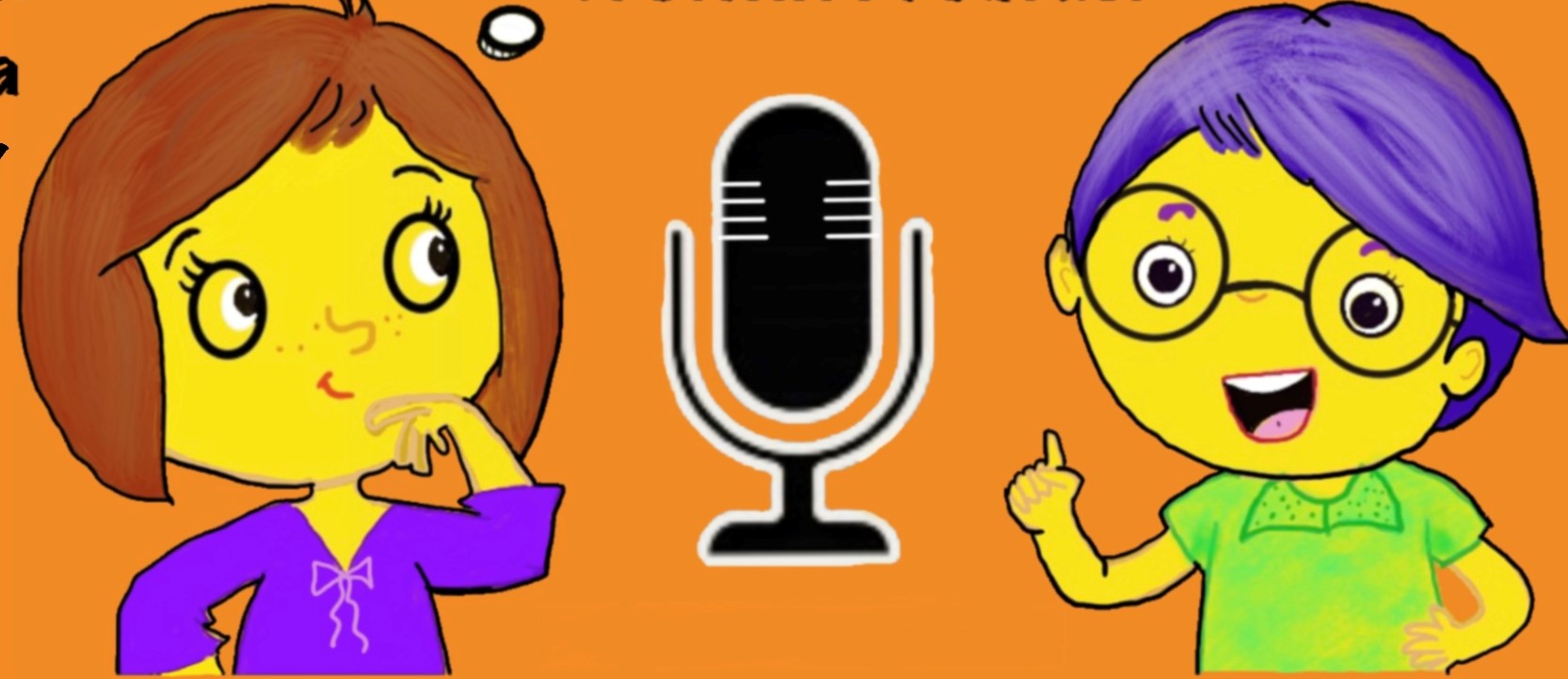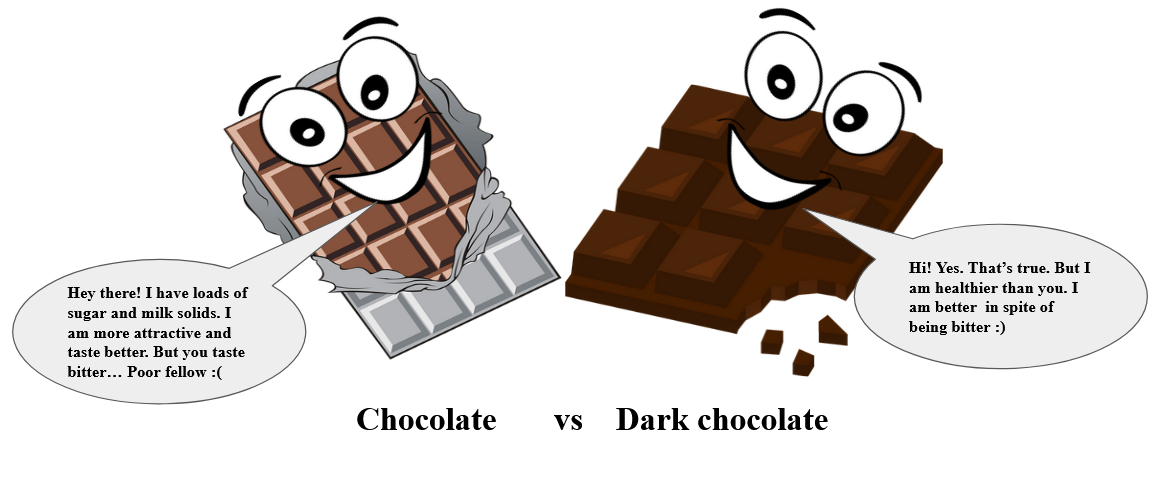2024-06-10 by Shakunthala Natarajan
Why Do We Like Chocolates? | Science Blog

After a long day you go to the nearby supermarket to buy something nice to eat. Of all the goodies, you pick up a tempting chocolate bar, have a bite and feel happy. While enjoying your choco treat, are you wondering why we like chocolates? Let us join Utsuka and Jigyasa in this episode of IndiaAsksWhy to unwrap the secret of why do we like chocolates.
Do you know that eating chocolates is a wholesome experience in itself? Yes! Enjoying a chocolate has different aspects like, its appearance, fragrance, taste and texture. That’s quite a number of sensory feelings coming together right? How can we understand each of their effects in our chocolaty experience? Well, neuroscientists have uncovered a great deal about these factors. There is a region in our brain called the ‘orbitofrontal cortex’. It acts like an invisible connector of events happening inside and outside of your body. So, when your tummy is hungry, and your eyes see a chocolate, our brain friend connects these scenarios. This prompts us to eat and enjoy the bar of joy! Moreover, this brain region also rewards us for eating chocolates. How do chocolates manage to awaken this reward giver? Let us look at the chocolate composition to find answers.
Cocoa powder, cocoa butter, milk solids and sugar come together to give the delicious chocolate. Do you know that without these sugar and milk solids, chocolate tastes bitter? Now do you get why dark chocolates taste bitter? They have no or negligible amount of milk and sugar content. But you would be surprised to know that in the very early days, cocoa beans were boiled to give a bitter choco drink called ‘xocolatl’. This was the world’s first chocolate, invented by the Mayan Indians in South America. Coming back, it is this milk-sugar combo with a high calorie value that acts as an addictive point and stimulates the reward region of the brain. Interestingly, this fat-sugar combo is hard to come by, in the goods made by the nature factory. This high-calorie, fat-sugar combo acts as the chocolate’s unique selling point :) In fact, brain researchers have found that high calorie and fat-containing foods make us feel better and more full than low calorie diets, especially when we are hungry. The chocolate constituents, the smooth texture and lovely taste act as powerful stimuli for the brain. These stimuli switch on the reward centre that makes chocolate eating a pleasant and memorable experience!

Now you must be asking, how did scientists look into the brain activity of people while eating chocolates. Isn’t it puzzling? Let us join Utsuka and Jigyasa in a conversation with physicist-turned brain researcher, Dr Nandini Chatterjee Singh, to understand this better. Dr Singh gives some more pieces of nice details on the chocolate eating experience, before telling us about how brain studies are done. She says chocolate contains caffeine, which acts as a stimulant. Phenylethylamine, an amphetamine and a precursor to the happy hormone dopamine, is also present in chocolate. Amphetamines are like superfast trains that quicken the message relay between our brain and the body, giving a feeling of high. These stimulating components combined with flavourful ingredients, and an active rewarding mechanism, make chocolate eating a fantastic experience overall. A balance in these ingredients and appropriate proportion of flavours are also crucial for this delightful experience.
Moving on, are you ready to see how scientists like Dr Singh have a peep into the human brain during various activities? There are particular areas of the brain – like the orbitofrontal cortex – that are involved during certain activities and hence work more. These regions need more energy to do more work during the particular activity being performed by the person. More energy means more oxygen needed, right? Thus there is a visible difference in the oxygen levels in these areas and the other ones. A magnetic resonance imaging (MRI) machine detects this difference created due to oxygen accumulation in certain regions. This helps in obtaining snapshots of those brain regions during that activity. That’s how people’s brain snapshots taken during chocolate eating activities have helped in unravelling the secrets behind the universal love for chocolates!
We are now at the end of our journey into the world of chocolates and neuroscience. I bet you must now be craving for a chocolate treat and would also want to learn more about Jigyasa and Utsuka’s adventures in the chocolate world. So, grab your favourite chocolate bar, gear up your headphones and get started with your Science quest!
References
- Carbonaro, G. (2023) Scientists unwrap what makes chocolate irresistible, euronews. Available at: https://www.euronews.com/next/2023/01/13/why-does-chocolate-feel-so-good-its-all-down-to-texture-and-lubrication-study-finds (Accessed: 27 June 2023).
- Chris Woodford. Last updated: August 4 (2021) The Science of Chocolate: Why Do People Like Chocolate?, Explain that Stuff. Available at: https://www.explainthatstuff.com/scienceofchocolate.html (Accessed: 27 June 2023).
- Mosley, D.M. (2017) The secret of why we like to eat chocolate, BBC News. Available at: https://www.bbc.com/news/health-39067088 (Accessed: 27 June 2023).
- Pugle, M. (2023) Why people love chocolate. it’s how it melts in the mouth, Healthline. Available at: https://www.healthline.com/health-news/why-people-love-chocolate-its-how-it-melts-in-the-mouth (Accessed: 27 June 2023).
- The science behind chocolate: Why it makes us feel good (no date) The American University in Cairo. Available at: https://www.aucegypt.edu/news/science-behind-chocolate-why-it-makes-us-feel-good (Accessed: 27 June 2023).
- Terenzi, S. (2023) Why do we love chocolate so much?, The Chocolate Journalist. Available at: https://www.thechocolatejournalist.com/blog/why-do-we-love-chocolate-so-much(Accessed: 27 June 2023).
- Why do we like chocolate so much? (2022) Science ABC. Available at: https://www.scienceabc.com/humans/like-chocolates-much.html (Accessed: 27 June 2023).
Cover Image Credit: Image by Jan Mateboer from Pixabay
tags: